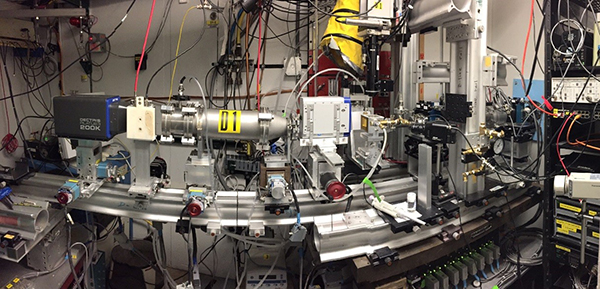Beamline
Lay-out

,
D-line set-up for combined GISAXS and GIWAXS experiments for in-situ annealing of nanoparticles in an inert gas environment for length scales from 1-100nm. From right to left: sample chamber on goniometer, Pilatus 100k WAXS detector, flight path, Pilatus 200k SAXS detector. Note that the D-line experimental hutch D1 had a length of only 3m.
(image: Tobias Hanrath, Cornell).
Beamline lay-out is at the very core of beamline construction. The space for optics and experiments is often a given. The art of beamline design is in making the most of the available space.
Available space for the experiments hutch is also an issue. While modern SAXS beamlines often feature lengths of 10 m or more, this does not preclude smaller beamlines to do great nanoscience! For instance for small nanoparticles (<10 nm), sample-detector distance at 10 keV is between 0.5 m and 1 m; for typical block copolymers (10-100 nm) a sample-detector distance of 2 m is sufficient. If a small area detector is available, GISAXS can even be done on a surface diffractometer.
For GIWAXS there are very different constraints. Here we want the area detector close to the sample to collect as many reflection as possible. How close is a function of the detector size; if only a small detector is available (50 mm x 50 mm), it can be as close as 100 mm provided the pixel size is less than 0.1 mm. The important range for soft matter samples to cover is 25 deg of scattering angle at 10 keV which provides the pi stacking peak. For such an arrangement, space around the sample has to be carefully planned.